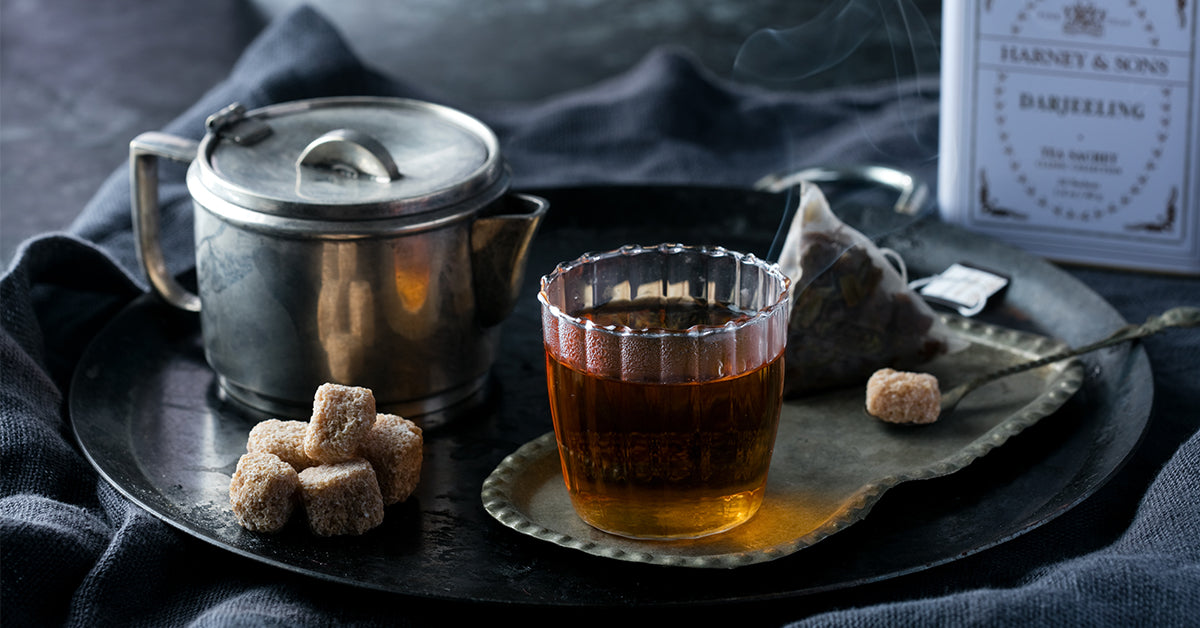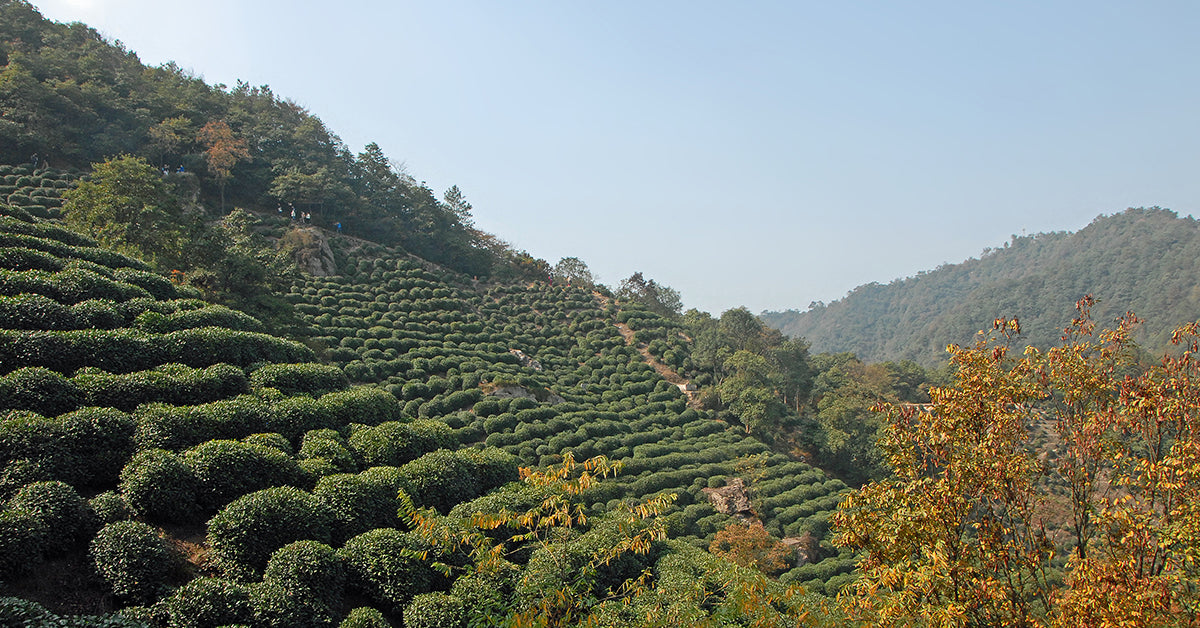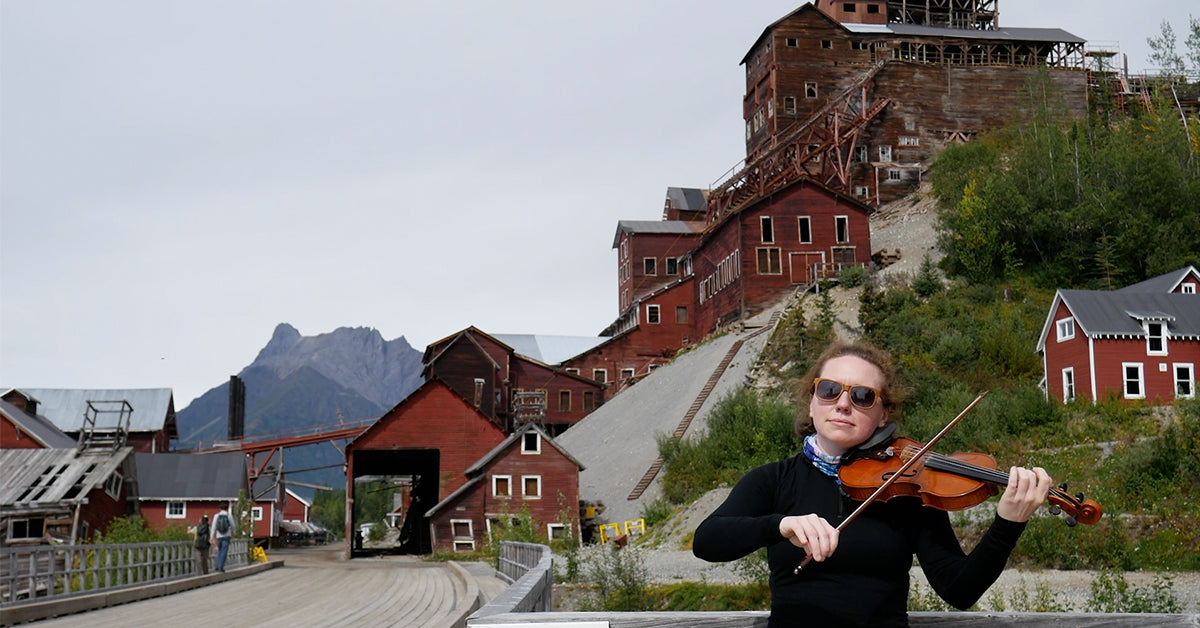The second post in our Beyond the Blend series takes us across the world to Darjeeling. This city in West Bengal, India, is known for its stunning views of Mt. Kangchenjunga, the world’s third-highest mountain; the Darjeeling Himalayan Railway and the “toy train,” a miniature train given heritage status by UNESCO (the United Nations Educational, Scientific and Cultural Organization); and, of course, famous for producing Darjeeling tea.
Darjeeling tea is one of the world’s finest black teas. It dates back to the 1830s when the English established a health resort and sanatorium for military families in the cool, clean air and high elevation in this remote region of Bengal. Tibetan Buddhist monks had named the place “Dorje-ling” in honor of the Dorje, a sacred ritual object of holy lamas that symbolizes eternal strength and constancy and a fixed axis point around which all else turns. Dorje-ling, or Darjeeling, was considered a transcendent place by the Tibetans. One look at the view of the majestic mountains, and you’ll understand why.

One of the British military personnel posted there, Dr. Archibald Campbell, planted seeds in his garden as an experiment. As he had success growing the tea bushes, others joined in as they discovered that the tea bushes favored the high altitude, cool thin air, plentiful rain, sunshine and lush environment. By the late 1860s, there were nearly 40 tea gardens in Darjeeling. Today, more than 150 years later, there are 87 tea gardens. While Darjeeling tea remains incredibly popular worldwide, production is tiny, with 10 metric tons of tea produced annually, or about one percent of India’s total.

While it cannot compete with the massive production of larger tea regions around the world, Darjeeling has carved out its own niche as one of the superior and highly desirable teas available. Due to the smaller quantities of tea grown there, Darjeeling tea growers are able to invest more time in harvesting and processing the tea. Darjeeling tea is handpicked by women, who represent the majority of Darjeeling tea workers, although entire families are often employed. Darjeeling tea growers have also increasingly adopted more ecological practices, shunning chemicals and artificial fertilizers for natural practices.
To truly appreciate Darjeeling teas, you have to become familiar with how and when they are harvested. Not all Darjeelings are created equal! It’s time to talk about First Flush, Second Flush and Autumnal Flush. Read on to learn more.

First Flush Darjeeling Teas
Like Chinese Qing Ming teas and Japanese senchas, First Flush Darjeelings consist of the first leaves and buds to flush in early spring, generally in February or early March, and lasting until mid-April. Picking begins with a careful plucking of two leaves and a bud. Darjeeling connoisseurs look forward with great anticipation for these delicious teas. What makes them so special? During the winter the plants go dormant, storing sugars and other compounds in their roots. As the weather warms, the plants send out those sugars and other tasty compounds to the tips of the plants to fuel new leaf growth. In the cool spring weather, the leaves grow slowly, making their flavor compounds even more concentrated and complex.
To help bring out these more nuanced flavors, tea makers oxidize First Flush teas for less time than they do teas harvested later in the season. By firing the leaves, they stop the First Flush after what they call the “first nose,” a particular scent that emerges about two hours after the leaves are rolled. First Flush teas are therefore quite green, both because of their shorter oxidation and because of hard withering, which is the process of removing moisture from the tea leaves to allow for development of flavor and aroma. (Just thinking about the First Nose gets Mike’s travel juices going and he can't wait to go back to Darjeeling).
First Flush did not always exist. The colonial British wanted their tea with milk and sugar, so they had no need for this light tea. After India’s independence, things and people changed. One of the new young players was an enterprising German from Hamburg named Bernd Wulf. He noticed that the teas of the spring had the potential to be nice and distinctive if they were made differently. If they were withered harder, that lovely aroma came out. However, the teas were more fragile and would lose that charm if they endured a long ocean trip. So Bernd came up with the bright idea to use one of those new jet planes in the 1960s and fly them in. We know this to be true, because we buy our Darjeelings from Bernd’s son, Marcus Wulf.
Our current First Flush offerings (may change annually). For the most up-to-date product listings, visit the Darjeeling collection page. First Flush teas arrive at our warehouse in June.
- Gielle First Flush Darjeeling. A bright, brisk cup of tea with unripe tropical fruit flavors.

- Namring First Flush. Features bright tropical aromas and slightly sweet notes of watermelon rind.

Second Flush Darjeeling Teas
Classic Second Flush Darjeeling teas have a mellow, more subdued, cooked stone fruit character. Second Flush leaves emerge a few weeks after the First Flush ends when the plant does not make any leaves as it regenerates energy. This in-between period is known as “banji.” In late May or early June, the plant starts to grow again, producing larger, less tender leaves than the First Flush, but still full of flavor. Darjeeling’s renowned muscatel flavor often described as a musky spice with sweet notes, is at its most pronounced in second flush teas.
Darjeeling tea makers adjust their production methods from First Flush to Second Flush to accommodate the larger, older leaves. Darjeeling tea makers harness the plants’ self-defense by allowing their natural predators, leaf mites, to feast on the leaves right before harvesting them. During the feasting, the leaves repel the predators by releasing defense in the form of aromatic compounds. When the tea is made, the compounds create lovely fruity flavors in our mouths.
As with First Flush teas, the tea makers hard-wither the leaves after harvesting to concentrate their aromas. After rolling the leaves, they oxidize them 30% longer. First Flush teas oxidize until the first nose – a certain distinctive, strong aroma that emerges after about two hours. Second Flush teas oxidize for about another 40 minutes to an hour. The first nose emerges, at which point the tea maker fires the leaves in an oven. The firing lasts just under half an hour, to add gently roasted flavors.
Our current Second Flush offerings. Second Flush teas arrive in Millerton in August.
- Seeyok. An excellent example of a second flush Darjeeling with lovely stone fruit flavors.

- Singell Second Flush. Sweet notes of muscatel grapes with bright fruit flavors like currants and guava.

Autumnal Flush Darjeeling Teas
The last picking of the season, the autumnal flush harvest takes place from October into November. It is the shortest harvest season, lasting around 30 days or so, beginning after the monsoon season has passed and the temperatures start to drop. Autumnal tea is rich and smooth and darker in color, often described as coppery. These teas are less floral and delicate than the first two flushes. We rarely offer Autumnals, often times we can only get them a month before the start of the next First Flush season.

While we do not always offer a strictly Autumnal Flush Darjeeling, our eponymously named Darjeeling is a mix of a First Flush and Autumnal Flush that we find a delightful representation of the “Queen of Teas.” Check out our entire collection of Darjeeling teas as well.
No matter which flush you prefer, you can’t go wrong with a true Darjeeling, also known as the “champagne of teas.” We suggest you try one of each flush to appreciate the difference and find out what all the “flush” is about!





2 comments
Mona
Your Namring First Flush has always been my favorite, but I was told that you are no longer carrying it. However I was not told why. Can you enlighten us?
Your Namring First Flush has always been my favorite, but I was told that you are no longer carrying it. However I was not told why. Can you enlighten us?
Arthur Freaney
I drink your Decaf Darjeeling (blood Pressure) Mike rates it a 2 across the board. Is the low score because it is decaffeinated and maybe decaffeination is worth a column. Thanks and I like it.
I drink your Decaf Darjeeling (blood Pressure) Mike rates it a 2 across the board. Is the low score because it is decaffeinated and maybe decaffeination is worth a column. Thanks and I like it.